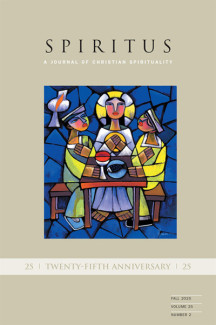
Johns Hopkins UniversityEst. 1876
America’s First Research University
5 Things You Might Not Know about Fifties Fiction

There were a lot of famous novels published during the 1950s: Invisible Man, On the Road, The Recognitions, Lolita, The Catcher in the Rye, Lord of the Flies, Fahrenheit 451, Things Fall Apart, Atlas Shrugged, all three volumes of The Lord of the Rings, The Tin Drum, The Talented Mr. Ripley, The Old Man and the Sea, East of Eden, Exodus ... the list goes on.
But it's hard to escape the sense that the decade's fiction didn't really hang together the way that modernist writing in the 1920s did or that soon-to-emerge postmodern fiction would in the '70s and '80s. Here are five things you might not know about 1950s novels and their weird historical context.
1. Fifties fiction had a hard time saying what it meant
Or at least a hard time saying it directly. Look at the list above: how many of those books are allegories in one sense or another, telling a story about national identity or political struggle or moral development or some other abstract matter on the back of a more or less literal tale? And how many of them went one step further, reflecting, indirectly, on their own status as stories? This is strange and not at all what we find in the rest of twentieth-century literature.
2. ... and a hard time getting to the point
Many of the fifties' best-known books are just plain long. The Lord of the Rings trilogy tops 1,200 pages, The Recognitions is over 700, and Invisible Man is close to 600. But even the decade's shorter books were often curiously ambling and formless, collecting incidents as if for their own sake. Kerouac is maybe the most famous example, his Benzedrine-fuelled scroll once dismissed by Truman Capote as "just typing." Think about how much of your favorite '50s novel could be cut without losing the basic thread of the plot.
3. It was different from pre-WWII fiction
The same can't be said of the prewar books that critics generally call modernist. Those novels could ramble and they weren't averse to metaphor, but they just weren't thoroughly allegorical and encyclopedic in the way that early postwar literature was. Something changed after the war, and literature shifted with it, even if the books themselves didn't generally take either the war or postwar society as a whole as their immediate objects.
4. Most of it failed
Not in the sense that it was bad; plenty of people rightly love these books. But it failed to create a lasting literary legacy or shape the work that came after it. In the four quarters of the globe, who writes a Kerouacian book? Or even an Ellisonain one? The problem is that fifties fiction addressed the postwar world haltingly and through the devices of earlier eras. Even where it was most innovative -- in Ellison or Achebe or Kerouac, for instance -- it withdrew, in the end, from its most radical ideas and slipped into a kind of stylistic resignation that writers didn't or couldn't overcome until years later.
5. It's a surprisingly good model for literature today
Why did fifties fiction look the way it did? In short, because it was caught between the older forms of modernism and a new world reshaped by World War II. These were books that knew something was wrong with existing literature, but couldn't say exactly what to do about it. So they fumbled along, using whatever was at hand for new purposes and hoping that some of it would stick. If this sounds a bit like our own literary moment, after the collapse of any consensus around postmodernism and absent any real agreement about what comes next, well, maybe the novels of the fifties can help us see the way forward, or at least know what to expect in such unsettled times.
Matthew Wilkens is a member of the English and American Studies faculties at the University of Notre Dame. He is the author of Revolution: The Event in Postwar Fiction.


